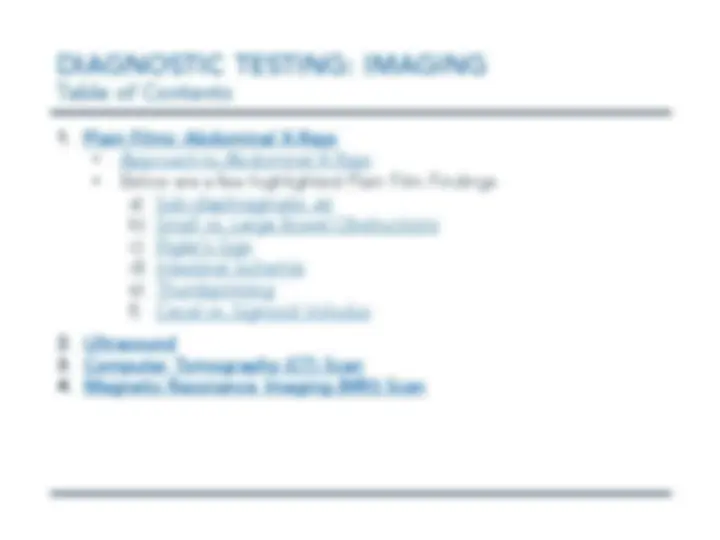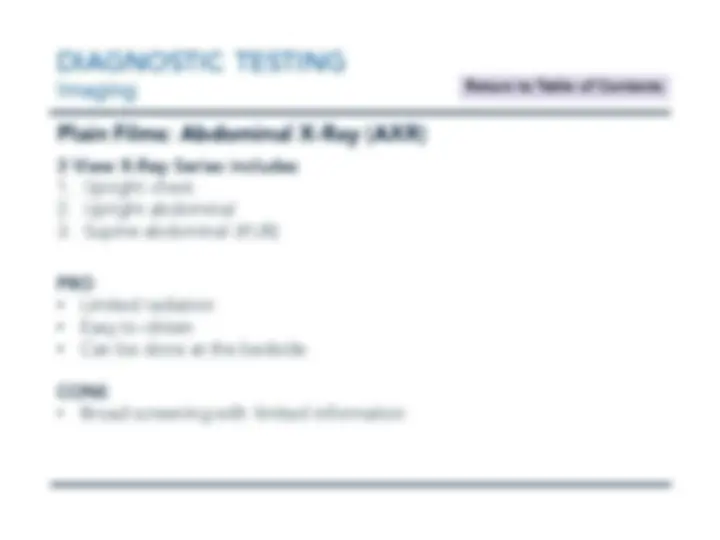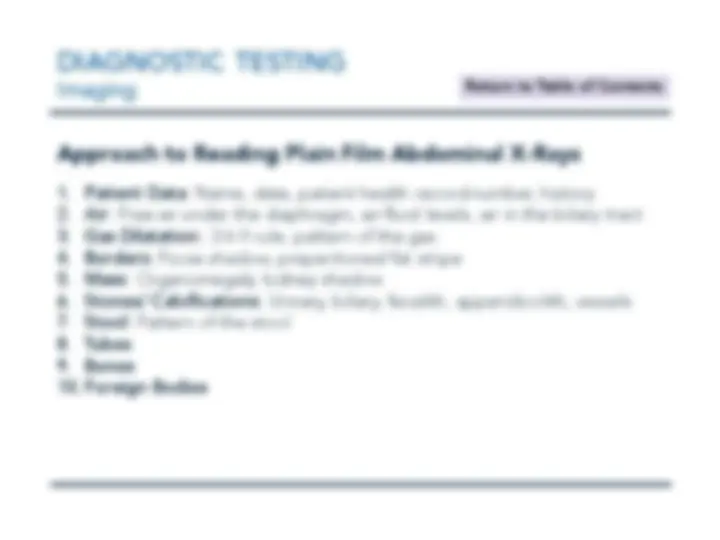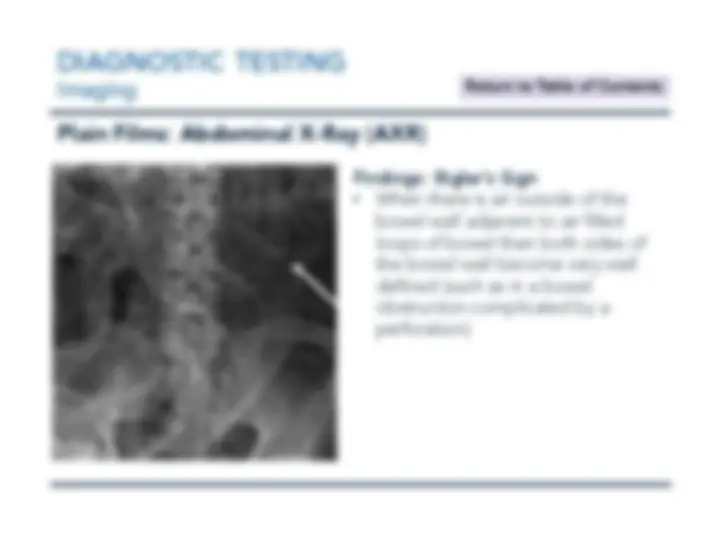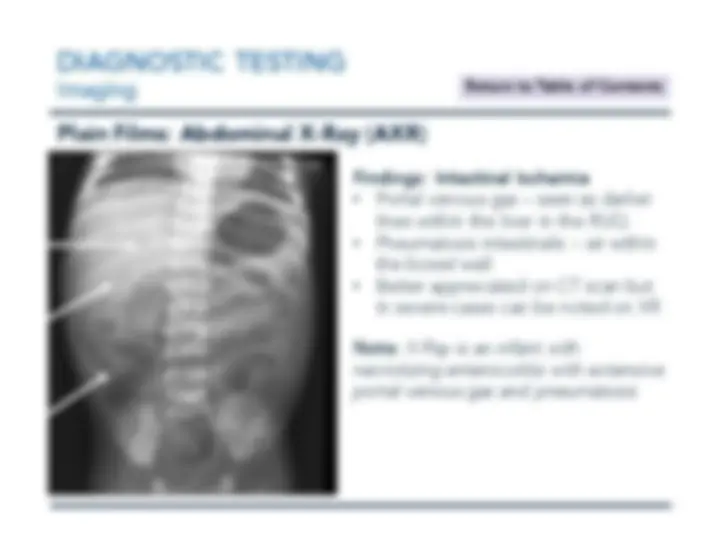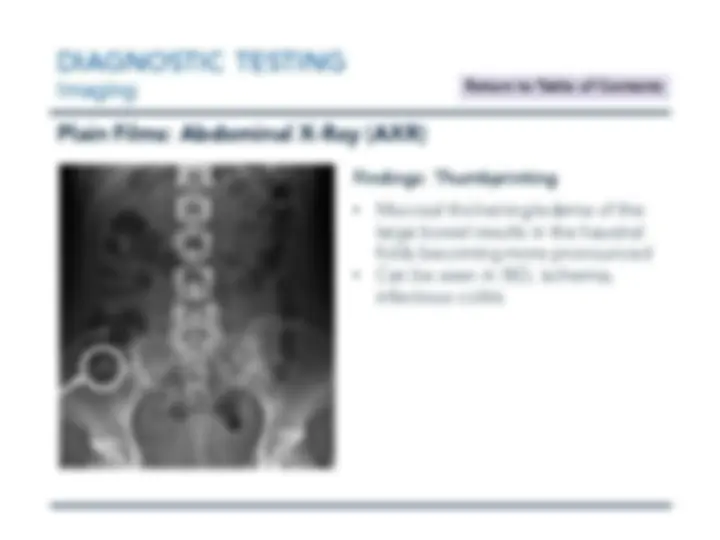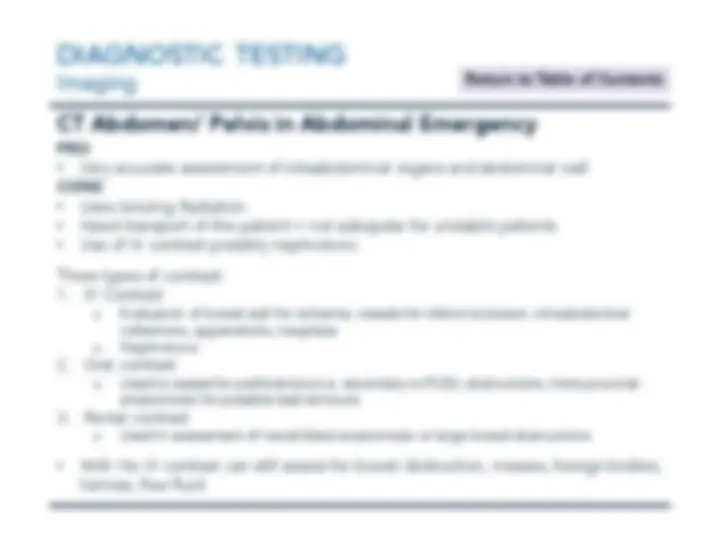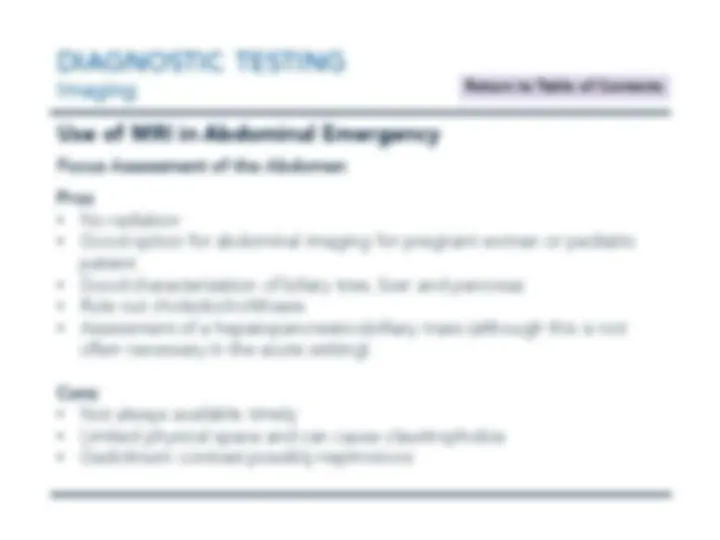Download Guidelines for Imaging in Emergency Surgery: Focus on Abdominal X-Rays and Techniques and more Lecture notes Printing in PDF only on Docsity!
Dynamic Practice Guidelines
for Emergency General Surgery
18 Committee on Acute Care Surgery, Canadian Association of General Surgeons
4 DIAGNOSTIC IMAGING MODALITIES
Melissa Hanson MD, and Jacinthe Lampron MD Committee on Acute Care Surgery, Canadian Association of General Surgeons Dynamic Practice Guidelines for Emergency General Surgery
Imaging
Return to Table of Contents
Plain Films: Abdominal X-Ray (AXR)
3 View X-Ray Series includes
- Upright chest
- Upright abdominal
- Supine abdominal (KUB) PRO
- Limited radiation
- Easy to obtain
- Can be done at the bedside CONS
- Broad screening with limited information
Imaging
Return to Table of Contents
Approach to Reading Plain Film Abdominal X-Rays
- Patient Data: Name, date, patient health record number, history
- Air: Free air under the diaphragm, air-fluid levels, air in the biliary tract
- Gas Dilatation: 3 - 6 - 9 rule, pattern of the gas
- Borders: Psoas shadow, preperitoneal fat stripe
- Mass: Organomegaly, kidney shadow
- Stones/ Calcifications: Urinary, biliary, fecalith, appendicolith, vessels
- Stool: Pattern of the stool
- Tubes
- Bones
- Foreign Bodies
Imaging
Return to Table of Contents
Plain Films: Abdominal X-Ray (AXR)
Findings: Small (SBO) vs. Large Bowel Obstructions (LBO)
- Look at caliber, lines, and location to differentiate SBO vs LBO
- Air fluid levels on upright x ray are neither specific nor sensitive and cannot help distinguish ileus, enteritis, or partial from complete SBO Small Bowel Obstruction Large Bowel Obstruction SMALL LARGE 3cm max diameter 6cm max diameter Lines all the way across the bowel (Plicae Circulares) Lines not fully across (Haustra) Central Peripheral
Imaging
Return to Table of Contents
Plain Films: Abdominal X-Ray (AXR)
Findings: Rigler’s Sign
- When there is air outside of the bowel wall adjacent to air filled loops of bowel then both sides of the bowel wall become very well defined (such as in a bowel obstruction complicated by a perforation)
Imaging
Return to Table of Contents
Plain Films: Abdominal X-Ray (AXR)
Findings: Thumbprinting
- Mucosal thickening/edema of the large bowel results in the haustral folds becoming more pronounced
- Can be seen in IBD, ischemia, infectious colitis
Imaging
Return to Table of Contents
Plain Films: Abdominal X-Ray (AXR)
Findings: Cecal vs. Sigmoid Volvulus
- Cecal = Typically flips up to the LUQ and takes on the shape of an embryo therefore called the “embryo sign”
- Sigmoid = Due to a twist at the base of the sigmoid mesentery and is takes on the appearance of a giant “coffee bean” Cecal Volvulus Sigmoid Volvulus
Imaging
Return to Table of Contents
CT Abdomen/ Pelvis in Abdominal Emergency
PRO
- Very accurate assessment of intraabdominal organs and abdominal wall CONS
- Uses Ionizing Radiation
- Need transport of the patient = not adequate for unstable patients
- Use of IV contrast possibly nephrotoxic Three types of contrast:
- IV Contrast o Evaluation of bowel wall for ischemia, vessels for infarct/occlusion, intraabdominal collections, appendicitis, neoplasia o Nephrotoxic
- Oral contrast o Used to assess for perforations (i.e. secondary to PUD), obstructions, more proximal anastomosis for possible leak/stricture
- Rectal contrast o Used in assessment of rectal/distal anastomosis or large bowel obstructions
- With No IV contrast can still assess for bowel obstruction, masses, foreign bodies, hernias, free fluid
Imaging
Return to Table of Contents
Use of MRI in Abdominal Emergency
Focus Assessment of the Abdomen Pros
- No radiation
- Good option for abdominal imaging for pregnant woman or pediatric patient
- Good characterization of biliary tree, liver and pancreas
- Rule out choledocholithiasis
- Assessment of a hepatopancreaticobilliary mass (although this is not often necessary in the acute setting) Cons
- Not always available timely
- Limited physical space and can cause claustrophobia
- Gadolinium contrast possibly nephrotoxic

